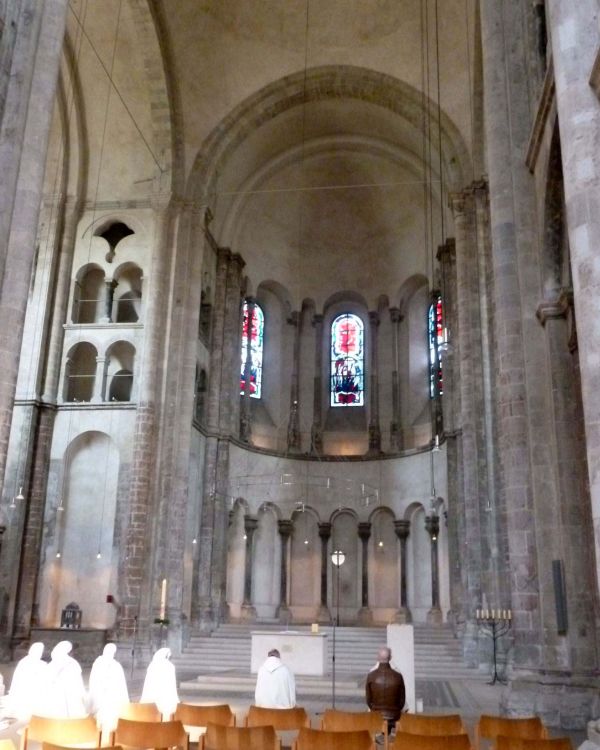Cologne 2007
As our ship sailed into Cologne, we were greeted by a fireworks display near the cathedral.
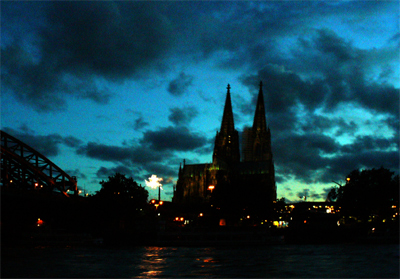
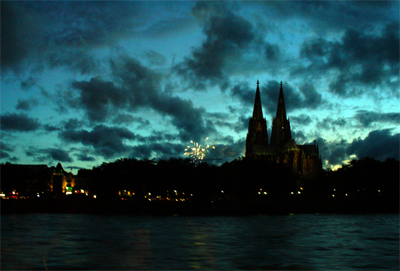
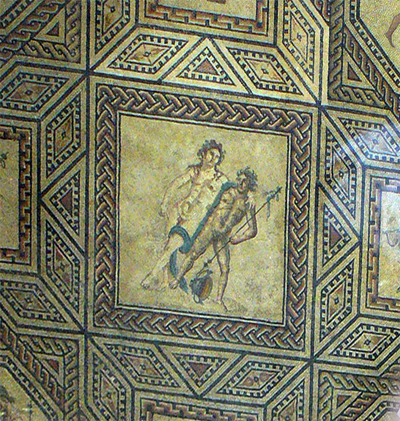
In the Romanic-German Museum is the Dionysos Mosaic, made up of approx. 1.5 million mosaic tiny stones and almost 33 feet long and 23 feet wide. It dates back to the years 220/230 AD, when it covered the floor of the central banqueting room of a 20-room villa In 355 AD, this villa, together with many others, was destroyed, when the Franconians conquered Cologne for the first time. For centuries it remained buried. It was only rediscovered during excavations for the Cathedral bunker in 1941. Pictured here is the central panel shows a young, drunken Dionysos, leaning on a Satyr.
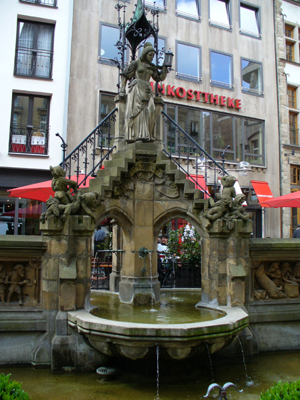
This is the Elves' Fountain, which tells the story of the elves who are said to have done all the work of the citizens of Cologne during the night, so that the inhabitants of Cologne could be very lazy during the day. According to the legend, this goes on until a tailor's wife gets so curious to see the elves that she scatters peas onto the floor of the workshop to make the elves slip and fall. The elves, being infuriated, disappear and never return. From that time on, the citizens of Cologne have to do all their work by themselves.
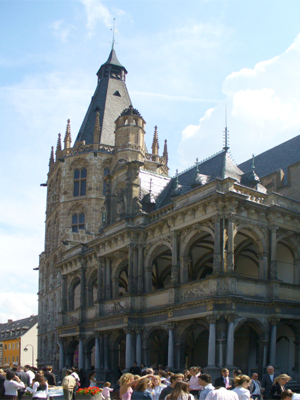
The town Hall with a crowd of people outside waiting for the bride and groom.
Cologne Dom 2007

Our city walk brought us to a view of the cathedral from the rear. The cathedral building started in 1248 and was completed in 1880.
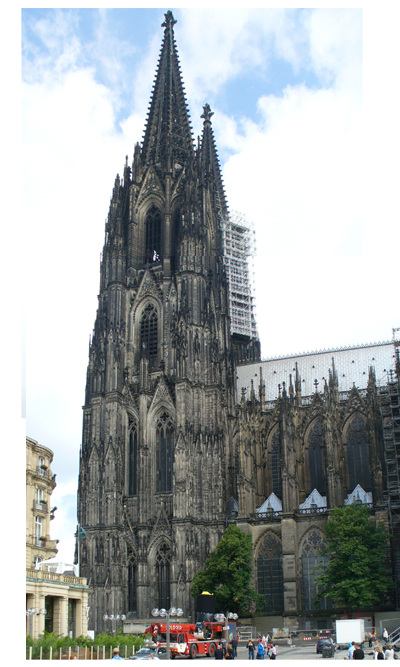
A side view of the cathedral.
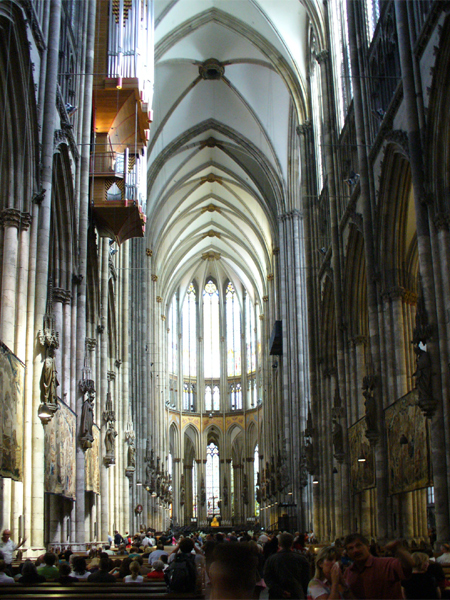
The magnificent interior. The nave is 472 feet long, 148 feet wide and 143 feet high.
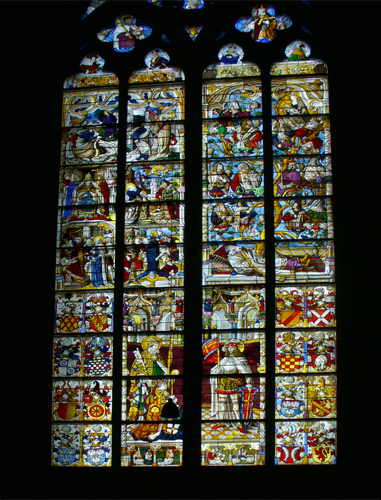
The late Gothic stained glass (1500's) depicted the Vigin and St. Peter.

One last look at the interior.
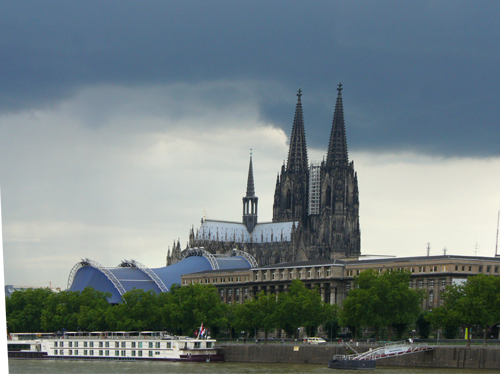
One last look at Cologne as the ship sails away.
Cologne Dom 2017
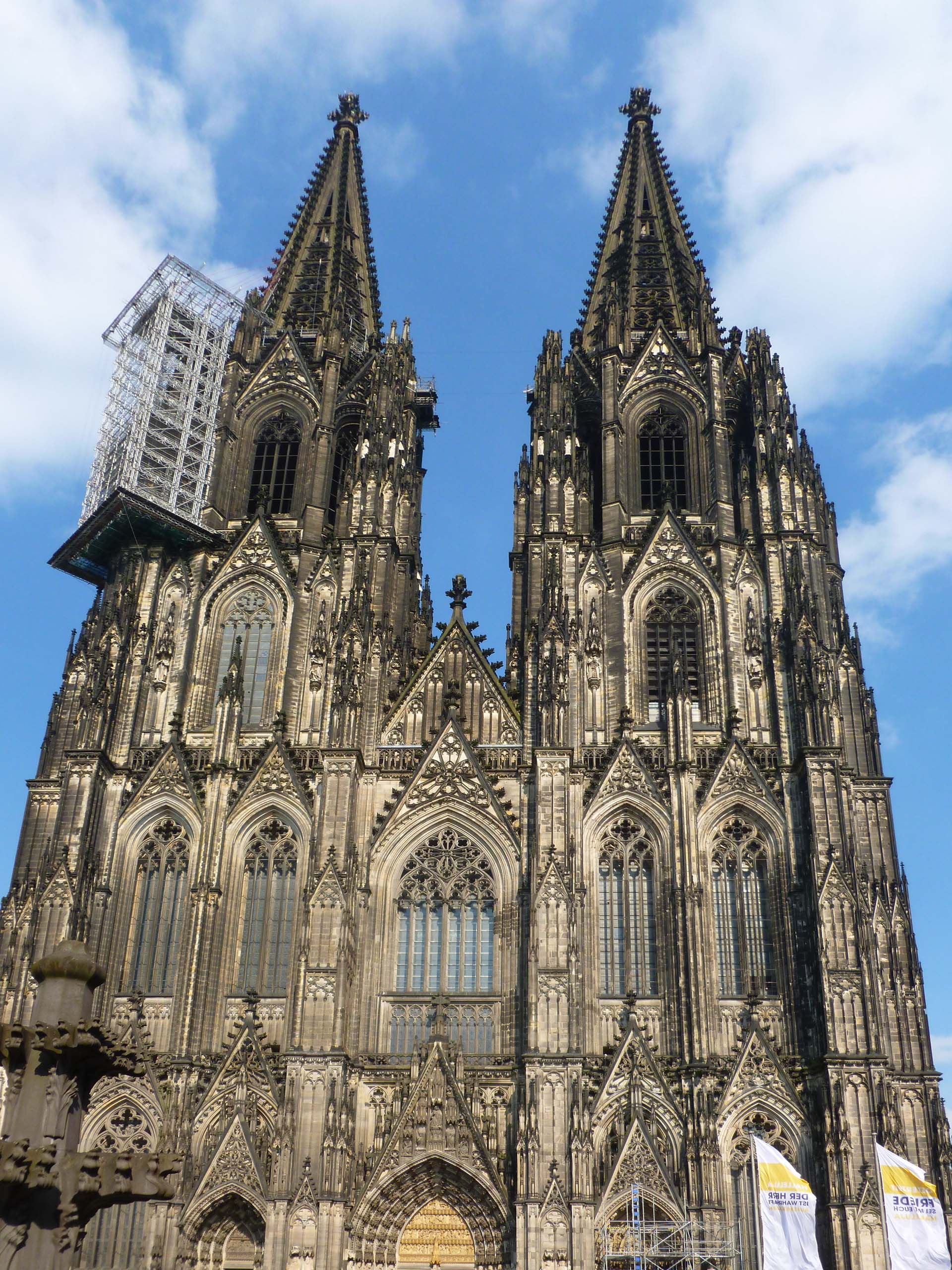

.
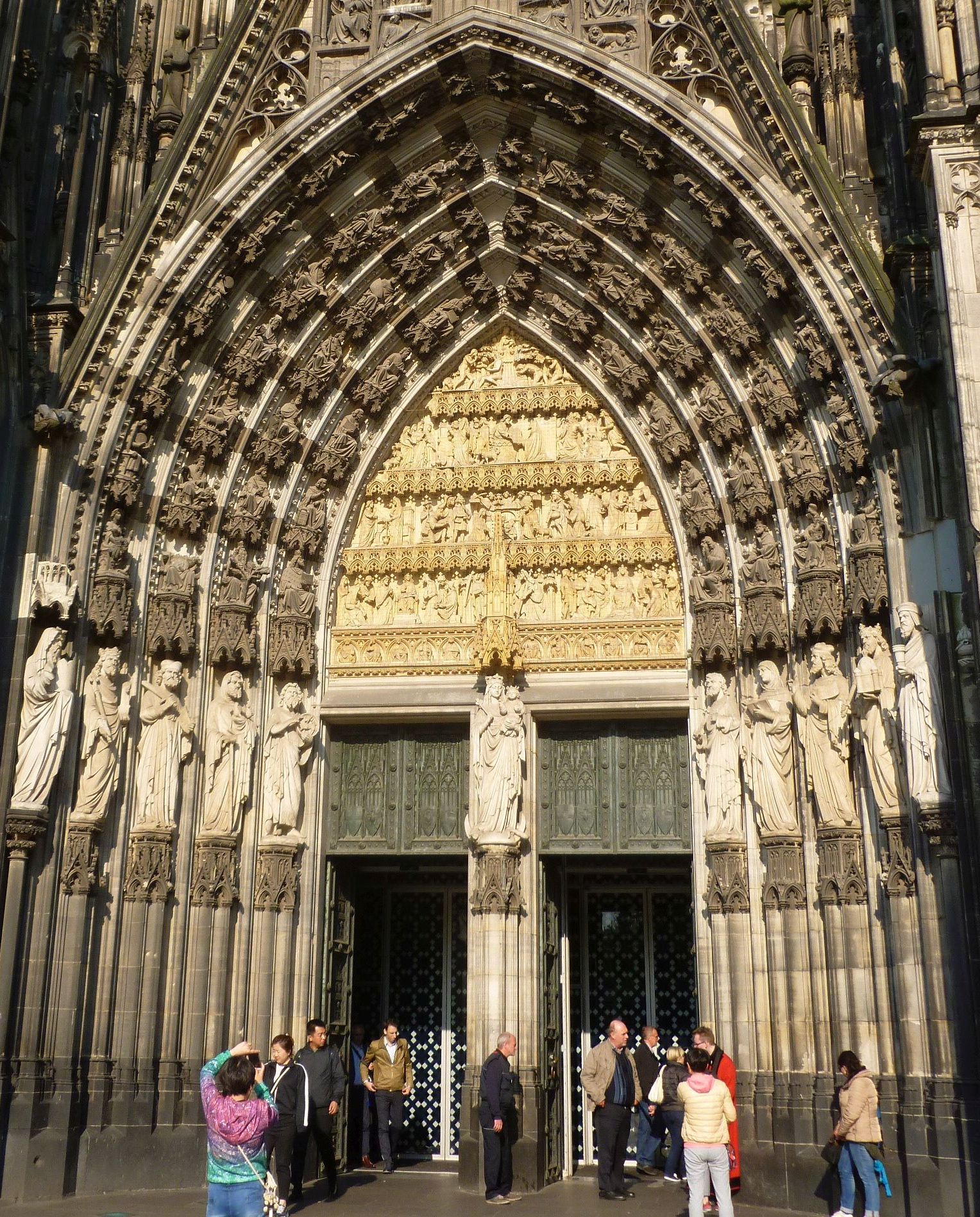
. A closeup of the entrance.
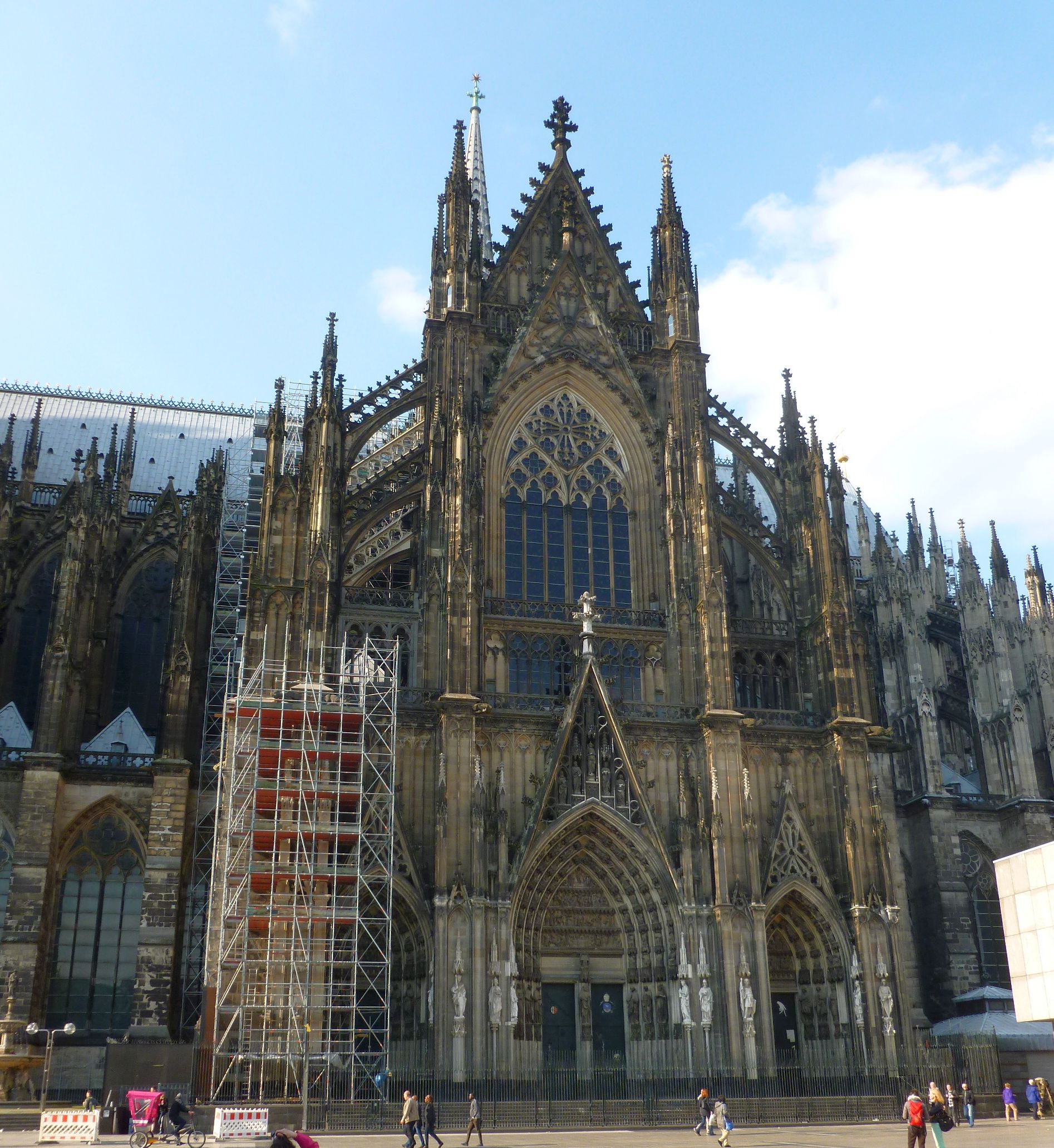
. A side view.
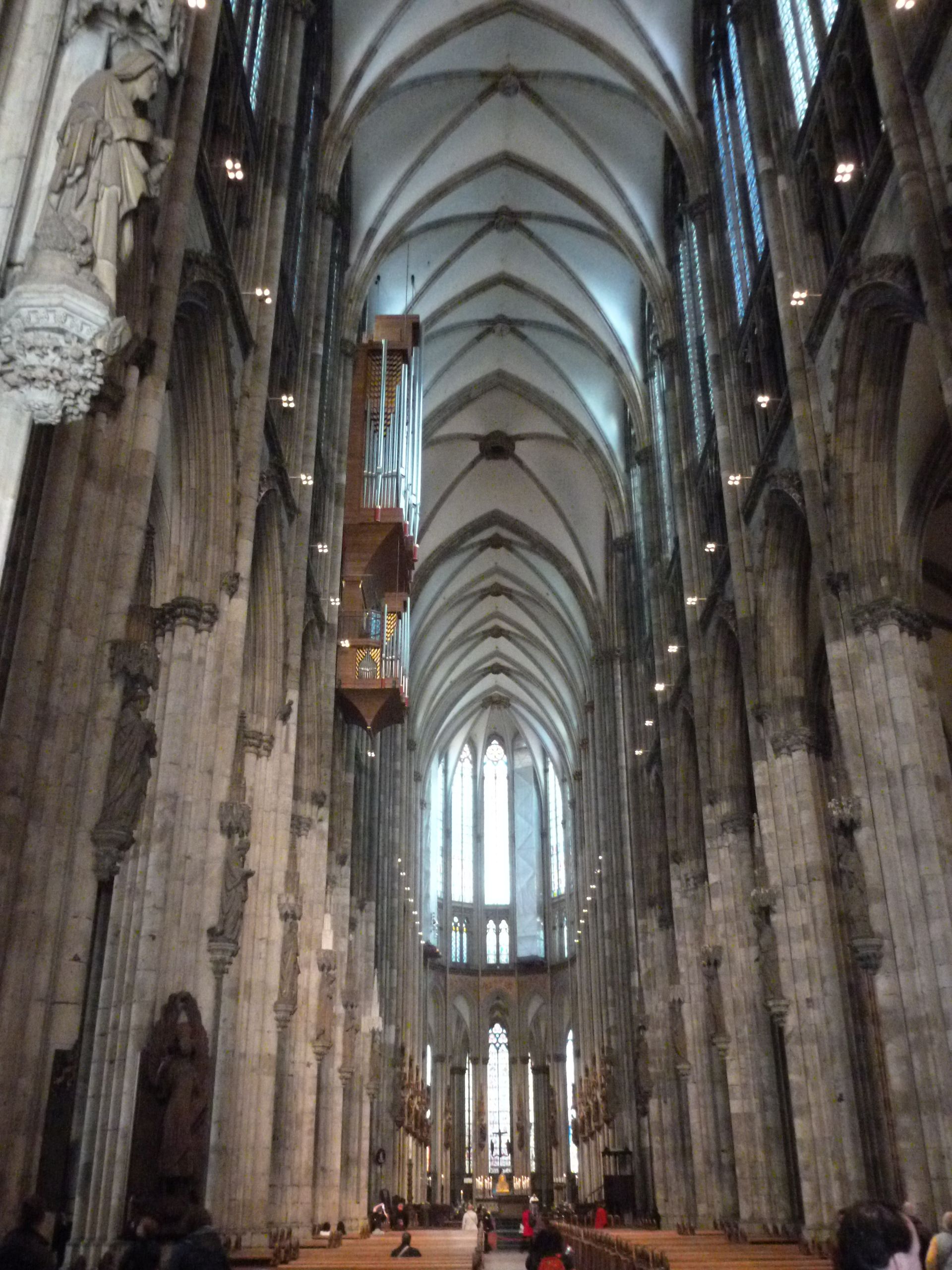
. The interior
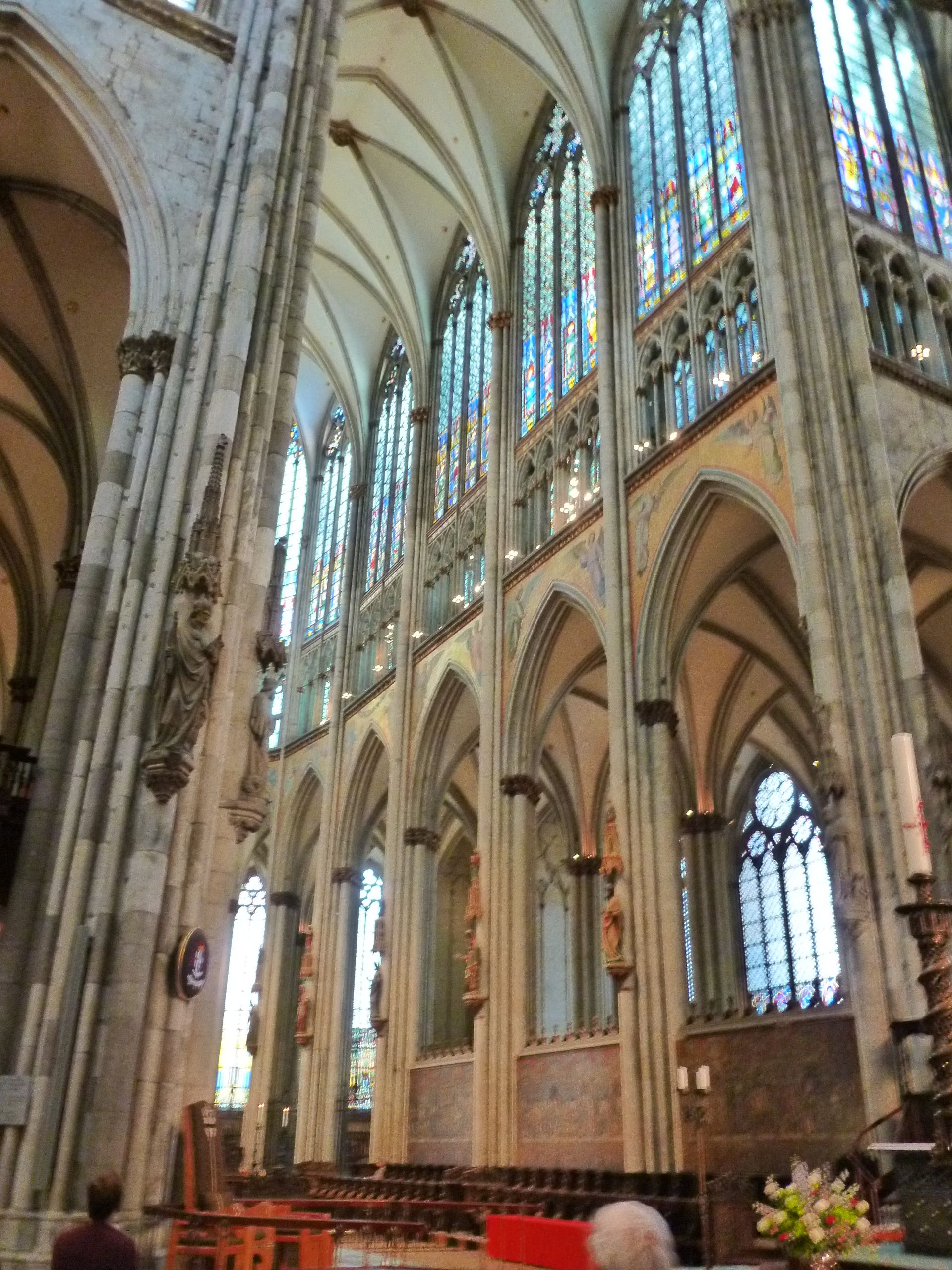
. The interior.
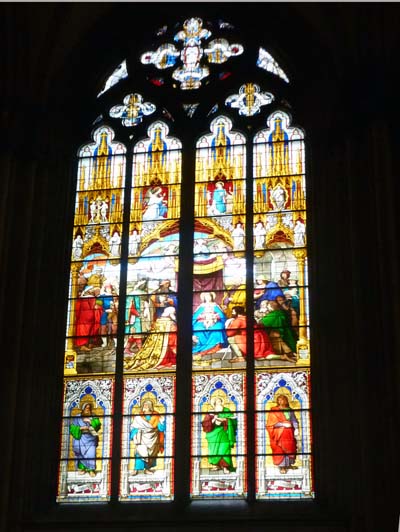
. A stained glass window with the four prophets Isaiah, Jeremiah, Ezekiel and Daniel at the bottom.
St Martin's Church 2017
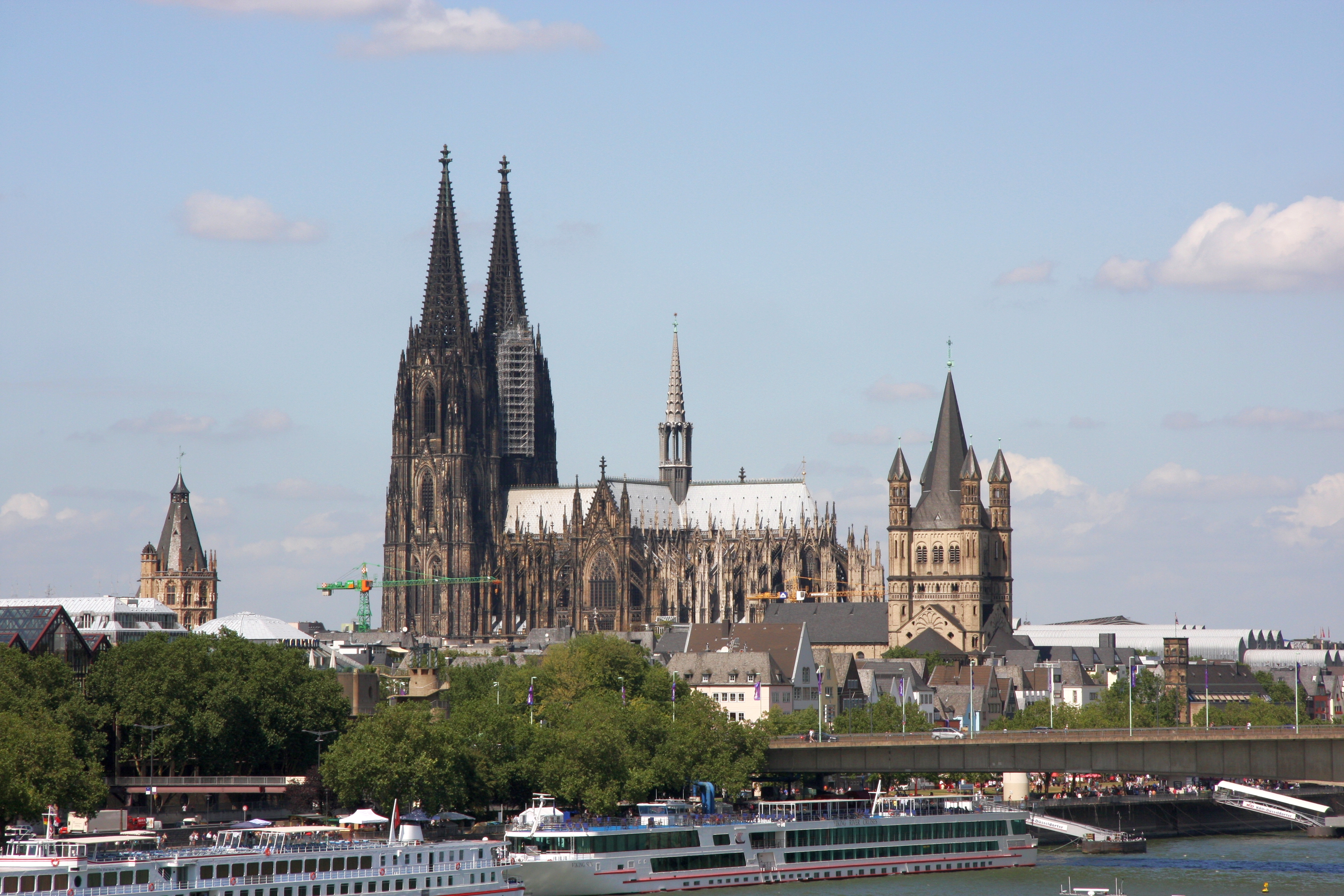
We also went to St Martin's romanesque church. In this Wikipedia photo the spires on the right are of St. Martin's and the single spire on the left is of St. Andrews.
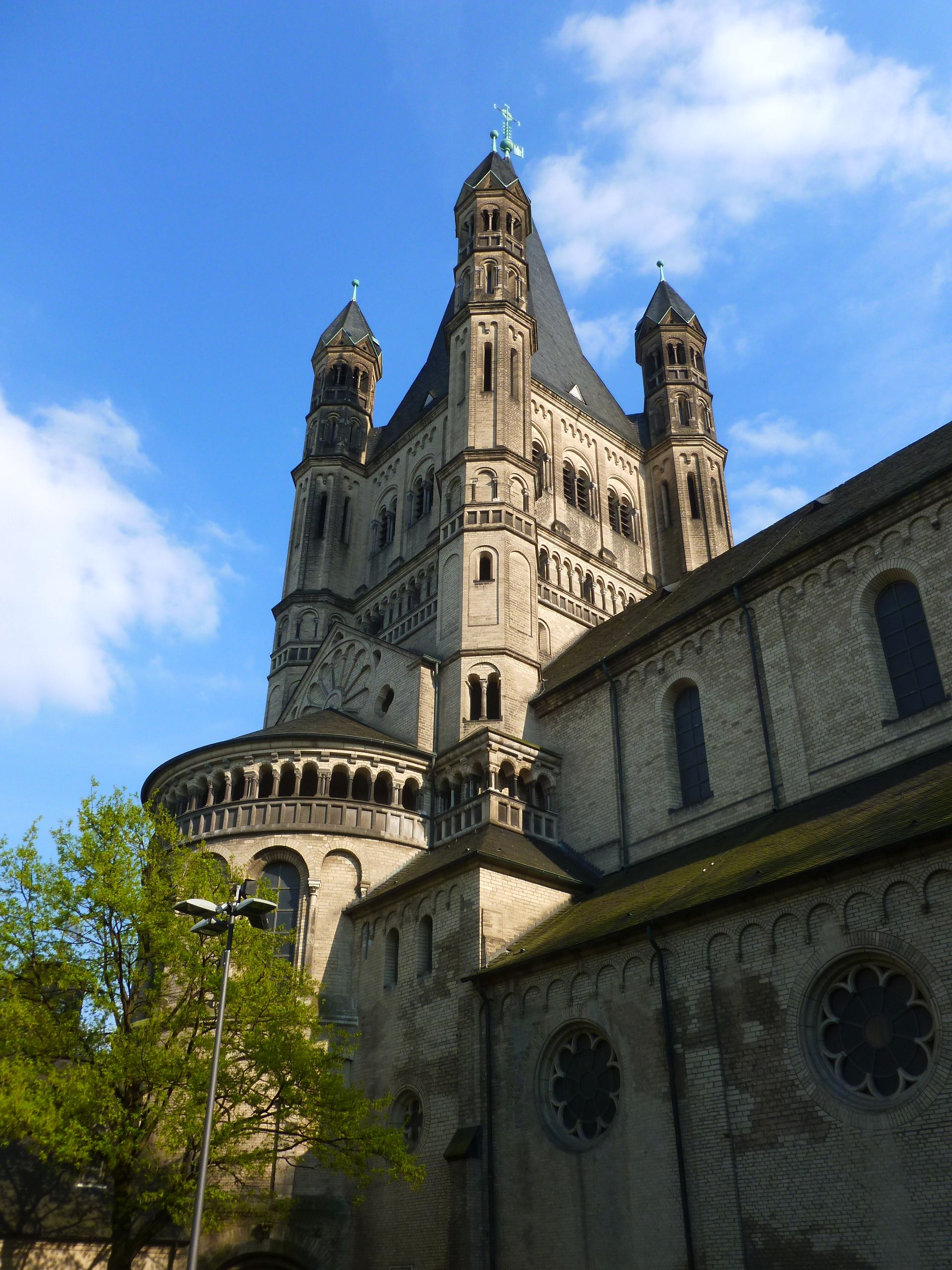
St. Martin's is one of twelve romanesque churches built in Cologne in that period. Its foundations (circa 960 AD) rest on remnants of a Roman chapel, built on what was then an island in the Rhine. The church was later transformed into a Benedictine monastery. The current buildings, including a soaring crossing tower that is a landmark of Cologne's Old Town, were erected between 1150-1250. The architecture of its eastern end forms a triconch or trefoil plan, consisting of three apses around the crossing, similar to that at St. Maria im Kapitol. The church was badly damaged in World War II; restoration work was completed in 1985.
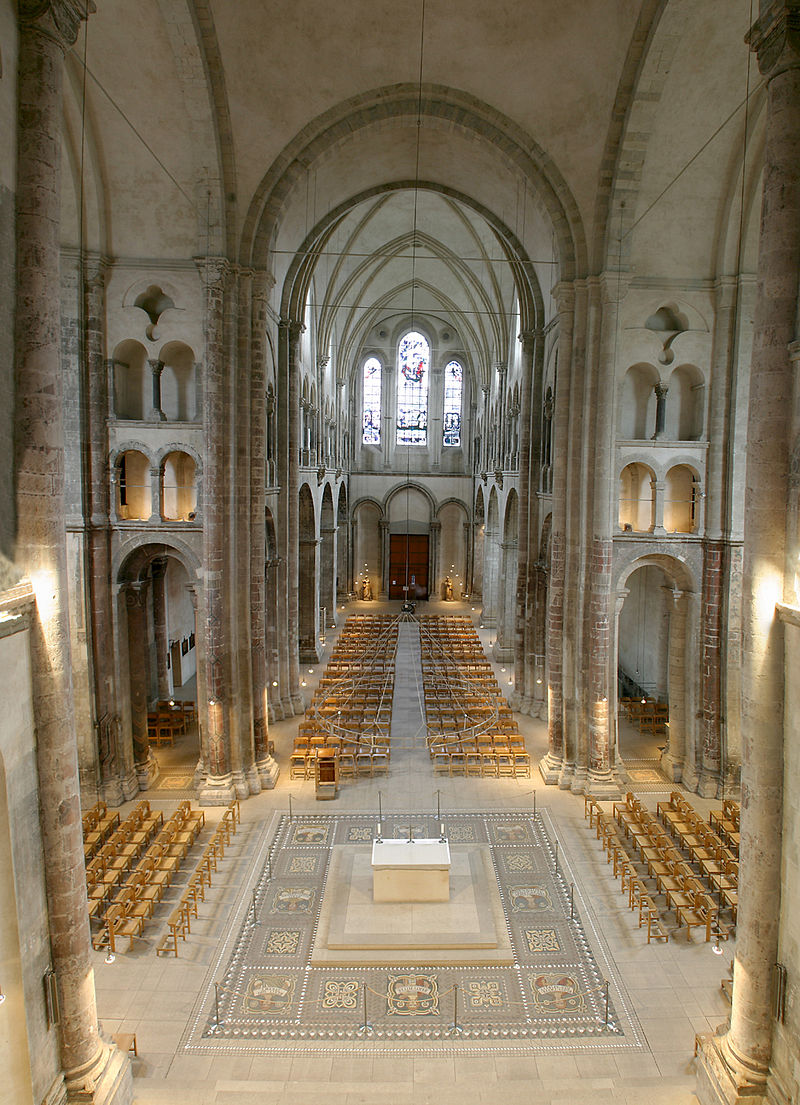
The interior of St Martin's, a Wikipedia photo.
St Andrews Church 2017
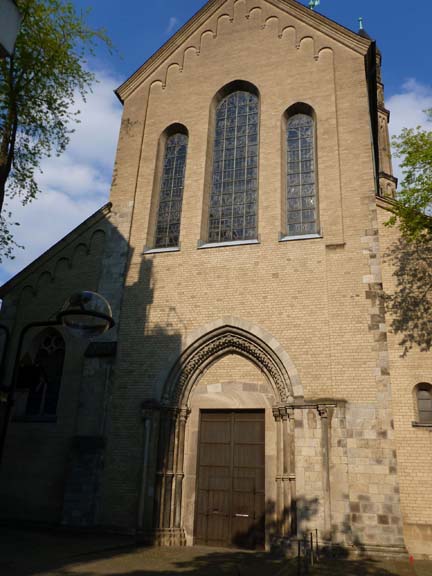
St. Andrew's (German: St. Andreas) is a 10th-century Romanesque church located in the old town of Cologne, Germany. Archbishop Gero consecrated the church in 974, dedicating it to St. Andrew, although an earlier church at the site was dedicated to St. Matthew. In the 12th century, the church was rebuilt in the Romanesque style, and was probably completed after the great fire of Cologne in 1220.[3] In the crypt of the church lies a Roman sarcophagus from the 3rd century, which holds the remains of the 13th-century theologian and natural philosopher St. Albertus Magnus. Since 1947, the Dominican Order has ministered to the church.
